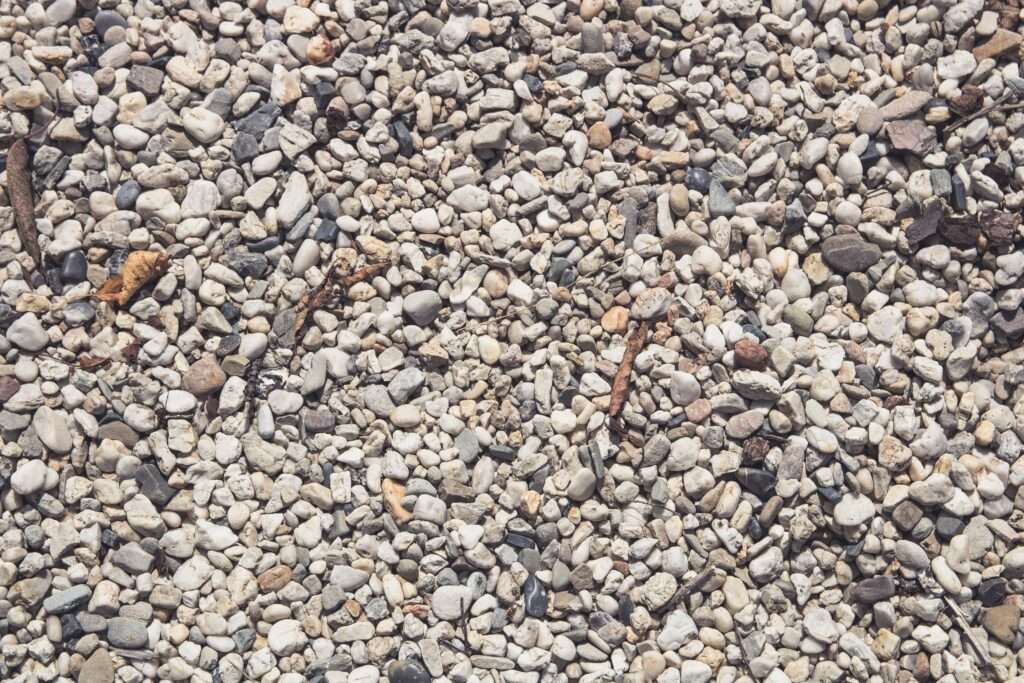In the context of off grid living, a common question arises regarding the feasibility of placing shipping containers on gravel surfaces. This article aims to explore the practicality and potential advantages of this unconventional setup. By examining the structural integrity and necessary considerations, we can gain insight into whether shipping containers can indeed safely rest on gravel and provide a viable solution for those seeking self-sufficiency off the grid.

Can Shipping Containers Sit On Gravel?
Introduction
Shipping containers have become a popular choice for various purposes, including storage, housing, and office space. When it comes to the placement of shipping containers, one common question that arises is whether they can be placed on gravel. This article aims to explore the factors to consider, advantages, and disadvantages of placing shipping containers on gravel, as well as alternative foundation options.
Factors to Consider When Placing Shipping Containers on Gravel
Type and Size of Gravel
The type and size of gravel used as the foundation for shipping containers are crucial factors to consider. The gravel should be durable, compactable, and cohesive to provide stability and support to the container structure. It is recommended to use dense-grade gravel with a maximum particle size of 3/4 inch for better load distribution and stability.
Weight Distribution
Proper weight distribution is essential to ensure the structural integrity of the shipping container. The weight of the container should be evenly distributed across the gravel foundation to prevent excessive stress on any one area. Uneven weight distribution can lead to sinking or tipping of the container, which may result in damage.
Leveling the Ground
Before placing a shipping container on gravel, it is crucial to ensure that the ground is adequately leveled. Uneven ground can cause stability issues and result in the container leaning or shifting. Proper leveling of the ground will help distribute the weight evenly, reduce stress on the container, and minimize the risk of sinking.
Drainage and Moisture Control
Effective drainage is essential to prevent water accumulation around the shipping container. Standing water can cause corrosion and damage to the container walls, weakening its structural integrity. It is recommended to incorporate proper drainage measures, such as installing a French drain or using gravel with good drainage properties, to ensure moisture control.
Anchor Points
To further enhance the stability of the shipping container, anchor points should be installed. Anchor points allow the container to be secured to the ground, preventing it from shifting or tipping due to external forces such as strong winds or seismic activity. Adequate anchor points, strategically placed and securely attached to the container and the gravel foundation, can significantly improve its stability.
Advantages of Placing Shipping Containers on Gravel
Cost-effective
Placing shipping containers on gravel proves to be a cost-effective alternative to traditional foundation options. The materials required for a gravel foundation are generally more affordable compared to concrete or other alternatives. Additionally, the installation process is relatively quicker and simpler, reducing labor costs.
Easy Installation and Removal
Compared to more permanent foundation options, placing shipping containers on gravel offers easy installation and removal. The simple setup allows for quick deployment and easy relocation if needed. This flexibility is particularly advantageous for temporary projects or situations where the container may need to be moved in the future.
Flexibility and Mobility
Shipping containers placed on gravel provide a high level of flexibility and mobility. The ability to easily relocate the container to different areas minimizes the need for costly and time-consuming construction projects. This advantage is beneficial for applications such as construction sites, disaster relief efforts, or temporary storage needs.
Improved Lifespan
Properly placing shipping containers on a gravel foundation can enhance their lifespan. The gravel acts as a protective barrier between the container and the ground, reducing direct contact and potential moisture damage. Additionally, the stability provided by the gravel foundation can prevent the container’s structure from weakening over time, prolonging its overall lifespan.

Disadvantages of Placing Shipping Containers on Gravel
Limited Load Capacity
One significant disadvantage of placing shipping containers on gravel is the limited load capacity compared to more robust foundation options. While gravel can provide sufficient support for regular storage needs, it may not be suitable for heavy-duty applications. The load capacity of a container placed on gravel should be carefully evaluated to avoid structural damage or failure.
Reduced Stability
Although a gravel foundation can offer stability for shipping containers, it may not be as reliable as more permanent foundation options. Uneven settling of the gravel or shifting due to external forces can result in reduced stability. This can pose a risk of the container tilting or leaning, potentially leading to damage or even collapse if not properly addressed.
Potential for Shifting and Sinking
Gravel foundations may be susceptible to shifting and sinking over time, especially if the ground beneath is not adequately prepared. Factors such as soil composition, moisture levels, and drainage issues can contribute to the gradual movement of the gravel. Regular monitoring and maintenance are necessary to address any shifting or sinking and prevent potential damage to the container.
Limited Insulation
Another drawback of placing shipping containers on gravel is the limited insulation provided by the foundation itself. Gravel does not offer thermal insulation properties, and the container may be more susceptible to temperature variations and moisture. Additional insulation measures should be considered to create a comfortable and energy-efficient interior environment.
Steps to Ensure Proper Placement on Gravel
To ensure the proper placement of shipping containers on gravel, the following steps should be followed:
Preparing the Ground
Before laying the gravel foundation, the ground should be adequately prepared. This involves removing any vegetation, debris, or uneven soil. Leveling the ground and addressing any slope issues are crucial to ensure stability and avoid structural problems.
Choosing the Right Type of Gravel
Selecting the appropriate type of gravel is key to achieving a stable foundation. Dense-grade gravel with a maximum particle size of 3/4 inch is commonly recommended. It is important to consider the load capacity requirements and consult with professionals to determine the most suitable gravel for the intended use of the container.
Leveling the Ground
After the ground preparation, it is essential to level the area where the container will be placed. This can be done using tools such as a rake or a hand tamper to remove any high spots and fill in low areas. Proper leveling will provide an even surface for the gravel foundation.
Providing Proper Drainage
Installing proper drainage measures is crucial to prevent water accumulation around the container. This can be achieved by incorporating a French drain system or using gravel with good drainage properties. Adequate drainage will help protect the container from moisture damage and corrosion.
Installing Anchor Points
To enhance the stability of the shipping container, anchor points should be securely installed. These anchor points can be attached to both the container and the gravel foundation, providing additional support and preventing shifting or tipping caused by external forces.

Alternative Foundations for Shipping Containers
While placing shipping containers on gravel can be a viable option for some applications, alternative foundation options offer additional benefits. Some alternative foundations to consider include:
Concrete Slab
A concrete slab provides a highly stable and durable foundation for shipping containers. It offers excellent load-bearing capacity and can withstand harsh weather conditions. However, constructing a concrete slab can be more time-consuming and costly compared to a gravel foundation.
Pier Foundation
A pier foundation involves using individual concrete footings to support the container. This option is suitable for uneven terrain and offers increased stability. However, the cost and time required for installation may be higher compared to other alternatives.
Helical Piles
Helical piles are steel screw-like anchors that are drilled into the ground to support the container. They offer excellent load-bearing capacity and are suitable for a variety of soil conditions. However, the complexity of their installation may require professional expertise.
Block and Beam Foundation
Block and beam foundations involve using concrete blocks and steel beams to create a raised platform for the container. This option provides stability and allows for easy leveling on uneven ground. However, it may require more materials and labor compared to other alternatives.
Rubber Pads or Mats
Rubber pads or mats can be used as a foundation option to absorb shock, reduce vibration, and minimize the container’s contact with the ground. This option is advantageous when the ground condition is not suitable for direct contact or when there are specific noise or vibration requirements.
Conclusion
Placing shipping containers on gravel can be a cost-effective, flexible, and easily removable foundation option for various applications. However, it is essential to consider factors such as the type and size of gravel, weight distribution, leveling the ground, drainage, and the installation of anchor points. While alternative foundation options may offer increased stability and load-bearing capacity, they often come with higher costs and longer installation times. Therefore, careful evaluation of the specific needs and conditions is necessary to determine the most suitable foundation for placing shipping containers.




